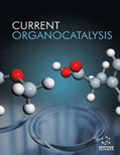
Full text loading...
Developing environmentally benign processes, such as organic reactions conducted in water, is desired from the view of sustainable technology. Concerning the palladium-catalyzed borylation reactions of aryl halides in water, only a few examples have been reported.
This study aimed to develop efficient methods for palladium-catalyzed borylation reactions of aryl halides in water, not only increasing product yields but also extracting products with less organic solvents.
We adopted polymer surfactants, such as diblock copolymers that consist of poly(N-isopropoylacrylamide) and a hydrophilic segment, and a poly(ethylene glycol)-based polymer that consists of poly(ethylene glycol) chain and 4-chloromethylbenzyl moiety.
Reactions using these polymers gave the borylation products in significantly higher yields than that in pure water. The efficiency of the extraction process for the products from the reaction mixtures was evaluated, indicating that the polymer micelles enabled separation processes with less organic solvent.
Applying polymer surfactants increased the product yields in Pd-catalyzed borylation of aryl halides, and it enabled the extraction of the products from the aqueous reaction mixture more efficiently.

Article metrics loading...

Full text loading...
References


Data & Media loading...
Supplements

